If you look at your lawn and see thin patches of yellowish grass among the healthy green ones, you may be dealing with take-all root rot. It is crucial you know how to identify this disease and treat it so you can keep your turf looking vibrant and fresh.
What Is Take-All Root Rot?
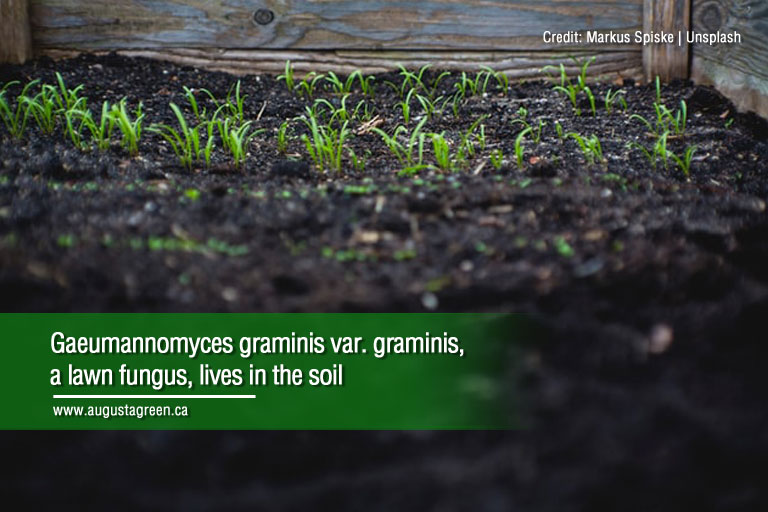
Take-all root rot is a lawn disease that is caused by the lawn fungus, Gaeumannomyces graminis var. graminis, that lives in the soil. You can usually find this fungus in both healthy-looking and diseased-looking turfgrass. It also lives in stolons (or runners), thatch, and decaying plant matter.
This disease is known by many names, including bermudagrass decline, centipedegrass decline, and St. Augustinegrass decline. It is so called because it also heavily damage these grass types. It can spread when you transport infected soil, grass, or thatch into an otherwise healthy lawn.
It appears in the form of weak, brown, and dead patches in turfgrass. The grass then suffers from stunted growth and becomes lifeless. Take-all root rot affects the roots of the plant by limiting its ability to absorb the nutrients and water it needs to grow and survive.
Causes of Take-All Root Rot
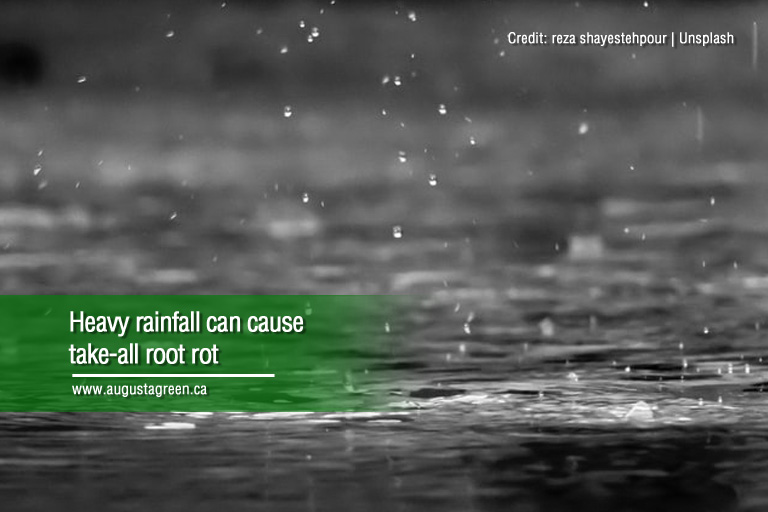
This disease affects coastal regions where there are sandy soils and prolonged periods of rainfall. It is also common in compacted areas with saturated root zones, or low and wet areas. Stress can also be its trigger, so any stress on the turfgrass can encourage the disease.
Here are some of its other causes:
- Excessive shade
- Temperature extremes
- Imbalanced soil fertility
- Incorrect irrigation schedules
- Poor drainage
Symptoms of Take-All Root Rot on Your Lawn
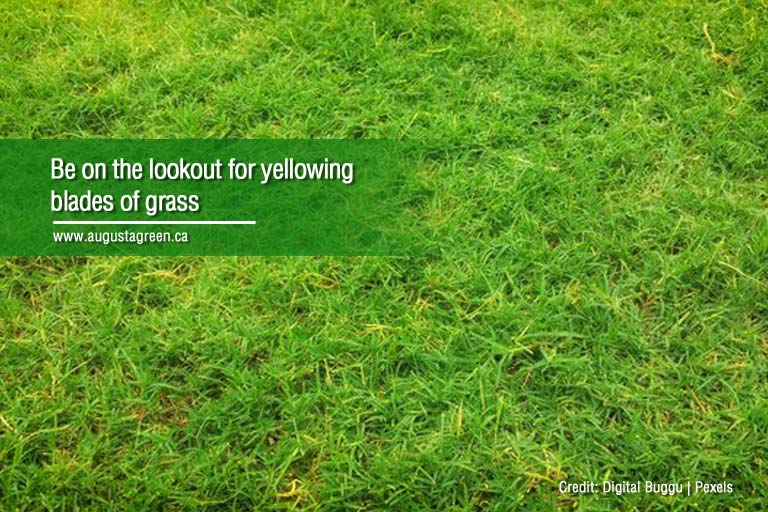
How do you know if your lawn has been affected by take-all root rot? It can be hard to figure out whether this lawn disease has taken over your lawn, or if it is due to other problems, such as pests. It is helpful to know the symptoms since it can help you treat and prevent this disease. Here are a few signs you should look out for:
How It Affects Leaf Blades
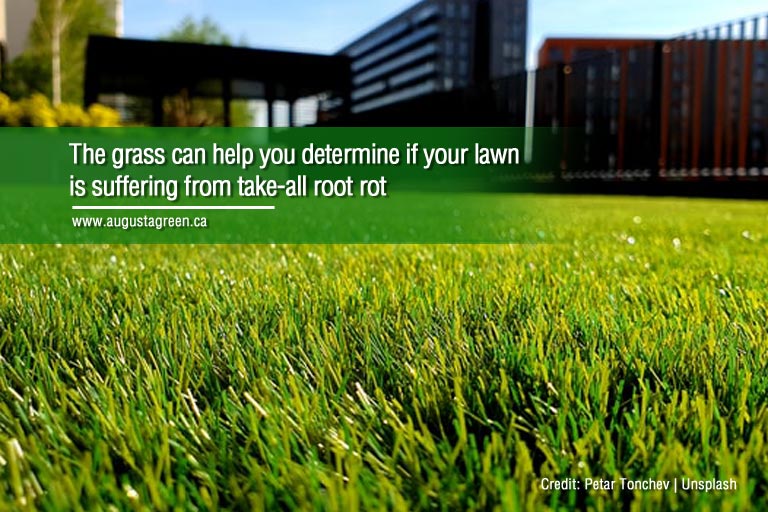
If the grass is under low levels of stress or is not stressed at all, the leaves will look perfectly healthy. However, if the grass is stressed, leaves may start to turn light green or yellow. Noticeable leaf colour changes mean that the fungus has been active for at least 2 to 3 weeks.
It will start with a few blades of grass at first, but as the fungus takes over, the yellow colouring will start to spread over your lawn in irregular patches. These patches (which can range between 1 foot to 20 feet in diameter) will soon turn brown and begin to wilt and die.
How It Affects Roots
The disease starts at the roots. By observing these, you can see the initial activities of the fungus. Unfortunately, root symptoms are not quite so obvious since they are hidden underground.
When the disease first takes hold, the roots become thin and take on an off-white hue. They can also develop isolated black lesions. As the disease progresses, the roots eventually become extremely short, black, and rotted in appearance. Rhizomes and stolons might also have these black lesions and begin to rot as well. It also makes it easy to lift the stolons from the soil. For comparison, healthy roots should take some effort to pull.
How to Prevent Take-All Root Rot
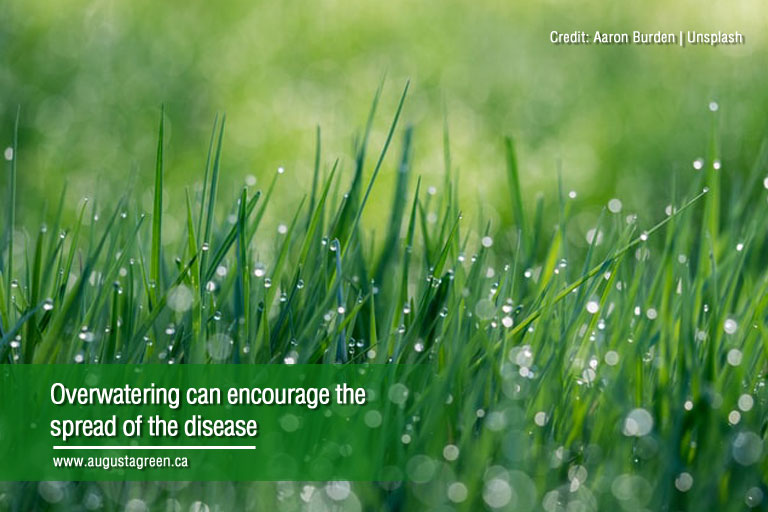
Prevention is better than cure. Even if your lawn has not been affected by this disease, it helps to know how to keep it from taking root, so to speak, and damaging your grass.
The most effective way to prevent this lawn disease is to take proper care of your grass. Take-all root rot worsens when your grass becomes stressed due to improper management, or unfavourable environmental conditions.
- Improve Drainage – You should encourage healthy root development. Avoid poor drainage by making sure that the area is draining well at and below the soil surface. When turf areas remain wet, they are likely to suffer from the disease.
- Limit Your Watering – Avoid overwatering at all costs. It can make your lawn more susceptible to the disease. Water your grass infrequently but deeply (around 6 to 8 inches deep) instead of frequently and shallowly. Additionally, investing in an automatic sprinkler system can help you control water levels.
- Correct pH Imbalance – You should also perform a pH test of the soil and fertilize it based on the results. If your soil has a high pH level, this can worsen the effect of the disease.
- Reduce Thatch – Thatch can build up on your lawn. If it has built up more than one-half-inch thick, your lawn becomes spongy, and it tends to scalp when you mow. You can reduce this by mowing at the proper height using a vertical mower. It also helps to use a core aerifier to aerate the soil.
- Limit Nitrogen Application – Thatch is more likely to build up when you apply too much nitrogen on your lawn. It also makes the grass more prone to stress and disease outbreaks.
How to Treat Take-All Root Rot
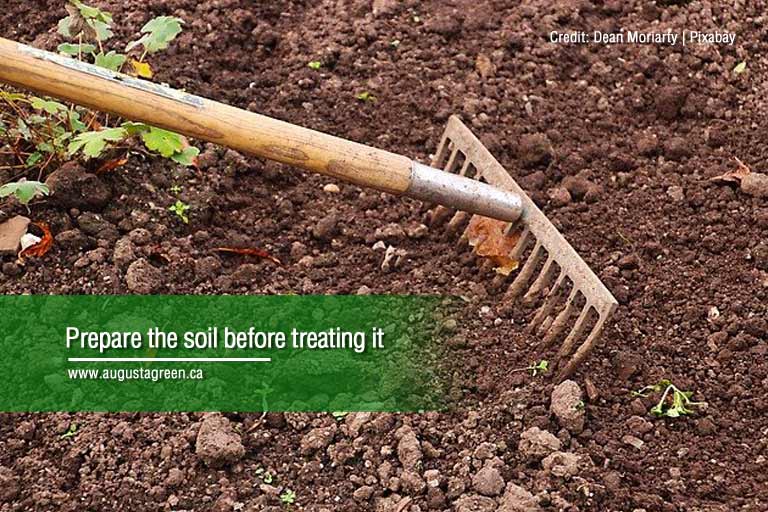
You may be suspecting that the disease has infected your lawn. If that’s the case, how do you fix take-all root rot?
Take-all root rot treatment can be done by applying fungicide. Doing so while observing the best practices for lawn care can go a long way in keeping your grass healthy. However, keep in mind that the best times to apply fungicides are in spring and fall.
If you plan to use a fungicide as a treatment for take-all root rot, always follow the instructions on the product label. Also, be mindful of applying certain fungicides during hot weather, as this can stress the grass.
There are only a few steps to take to apply the fungicide for take-all root rot:
Make sure to remove and rake any dead or infected plant materials. It will help the fungicide reach the soil.
Mix the fungicide with 4 to 5 gallons of water per 1,000 square feet.
Water your grass thoroughly and immediately after applying (¼ to ½ inch water). The water makes sure that the fungicide moves into the stolon and root zone, instead of drying on the leaves.
Preserve the allure and lush quality of your turf by taking proper care of it. Following the right practices can improve the way your lawn looks.
One thing you can do to make sure your grass remains healthy is to install a reliable landscape irrigation system. To have one installed, contact Augusta Green Sprinklers, Inc. at (416) 227-1666, or email us at admin@augustagreen.ca. Our services will help you with lawn water management and keep take-all root rot from gaining a foothold in your property.

